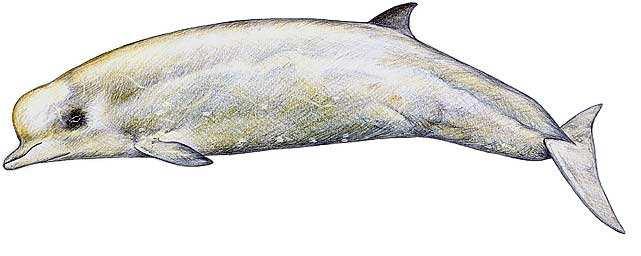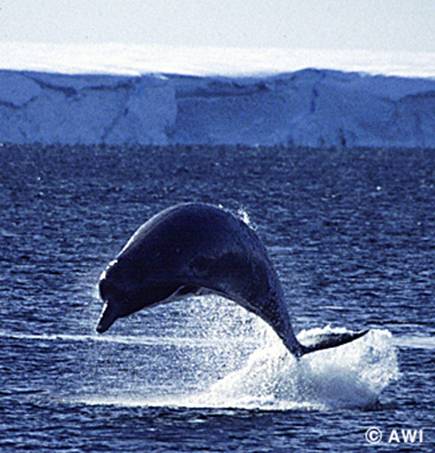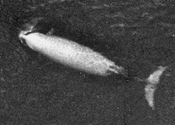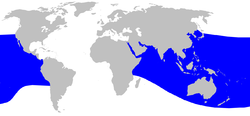Common Name: Southern Bottlenose Whale
General Description: Bottlenose Whales have a dolphinlike shape, with a tubelike snout, though the animals are much larger than any beaked dolphin. The forehead is very bulbous, especially in adult males. The lower jaw extends slightly farther forward than the upper one.
The dorsal fin is sickle-shaped, about 30 cm high and located about two-thirds of the distance back from the snout to the tail. The flippers are short and tapered. The tail flukes are broad and have a deeply concave trailing edge, which has no notch.
The colour is cloud grey or bluish black, increasingly pale towards the flanks. Some individuals have small white spots on the sides and below. The heads of very large specimens, especially older males, are white. The flippers and the undersides of the flukes are brown or grey.

Size: Adults, The length is up to about 7 m, with females being slightly longer. Males weigh about 6.2 tons and females, 7.9 tons. Calves at birth, 2.75 m lon
Appearance At Sea: The species may form groups of 30 to 40 individuals.
The blowhole, back and fin all become visible simultaneously. The bushy spout projects slightly forward and to a height of 2m.
Found In: The closely related Northern Bottlenose Whale is found in deep waters at the continental shelf edge and slopes. Southern Bottlenose Whales feed on squid and cuttlefish.
Records from India: There are no records from India. There have been sightings from off the coast of Sri Lanka, and one stranding in the Colombo harbour.

World Distribution: All that we know of this species comes from strandings. These strandings have taken place in New Zealand, Australia, Argentina, South Africa and Sri Lanka. There are reports of sightings in the Antarctic. The species is therefore probably found in the Indian Ocean, Southern Pacific and Atlantic Oceans and in Antarctic waters.
Could Be Confused With:There is a possibility of confusion with other beaked whales.
Diagnostic Features: At sea, Sickle-shaped dorsal fin, bulbous forehead
Stranded Specimens:One pair of fully developed conical teeth is present in the lower jaw at the tip, but these erupt only in older adult males. Some individuals have a series of undeveloped teeth, which are said to be the size of toothpicks, in the jaws.




